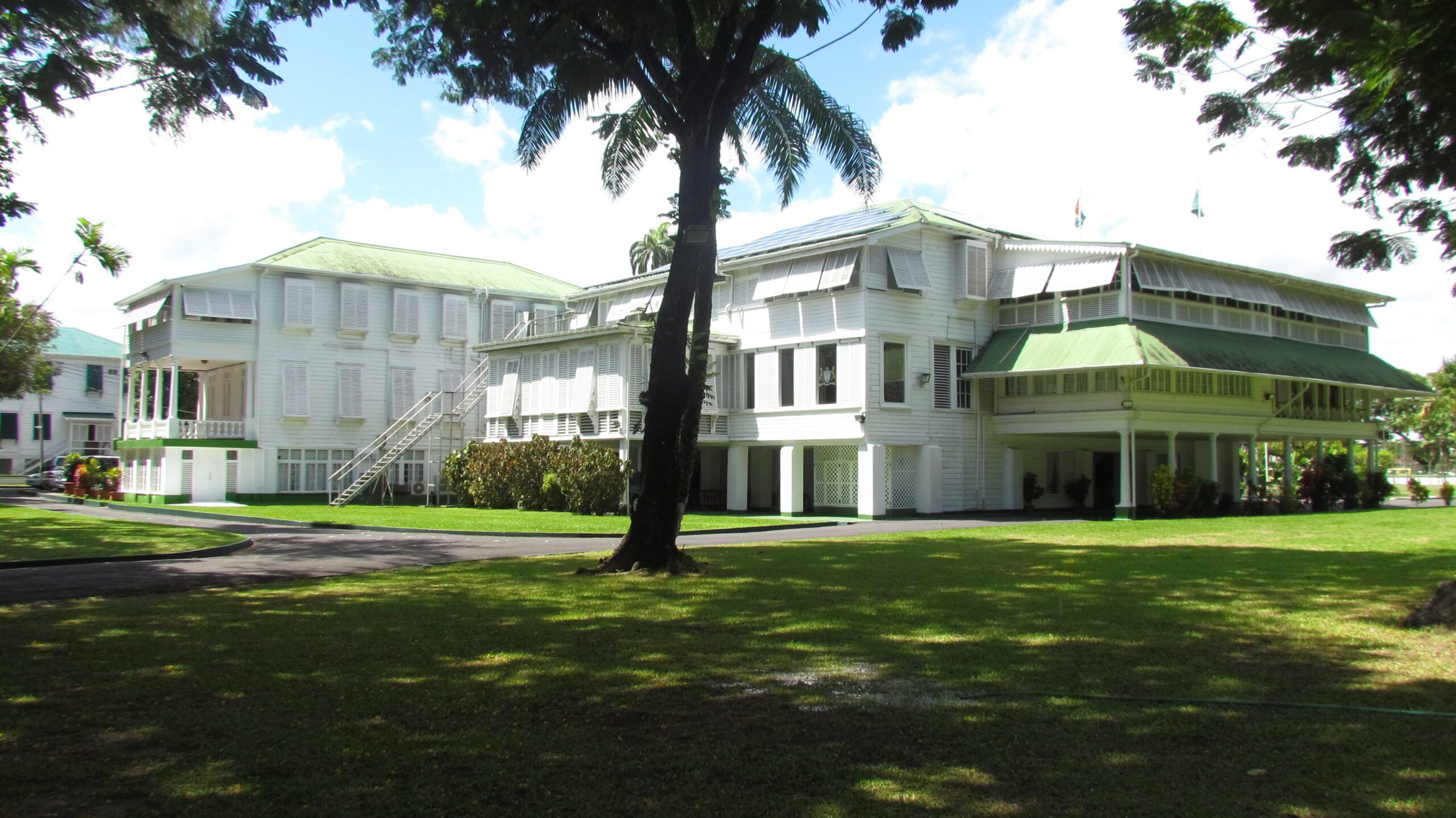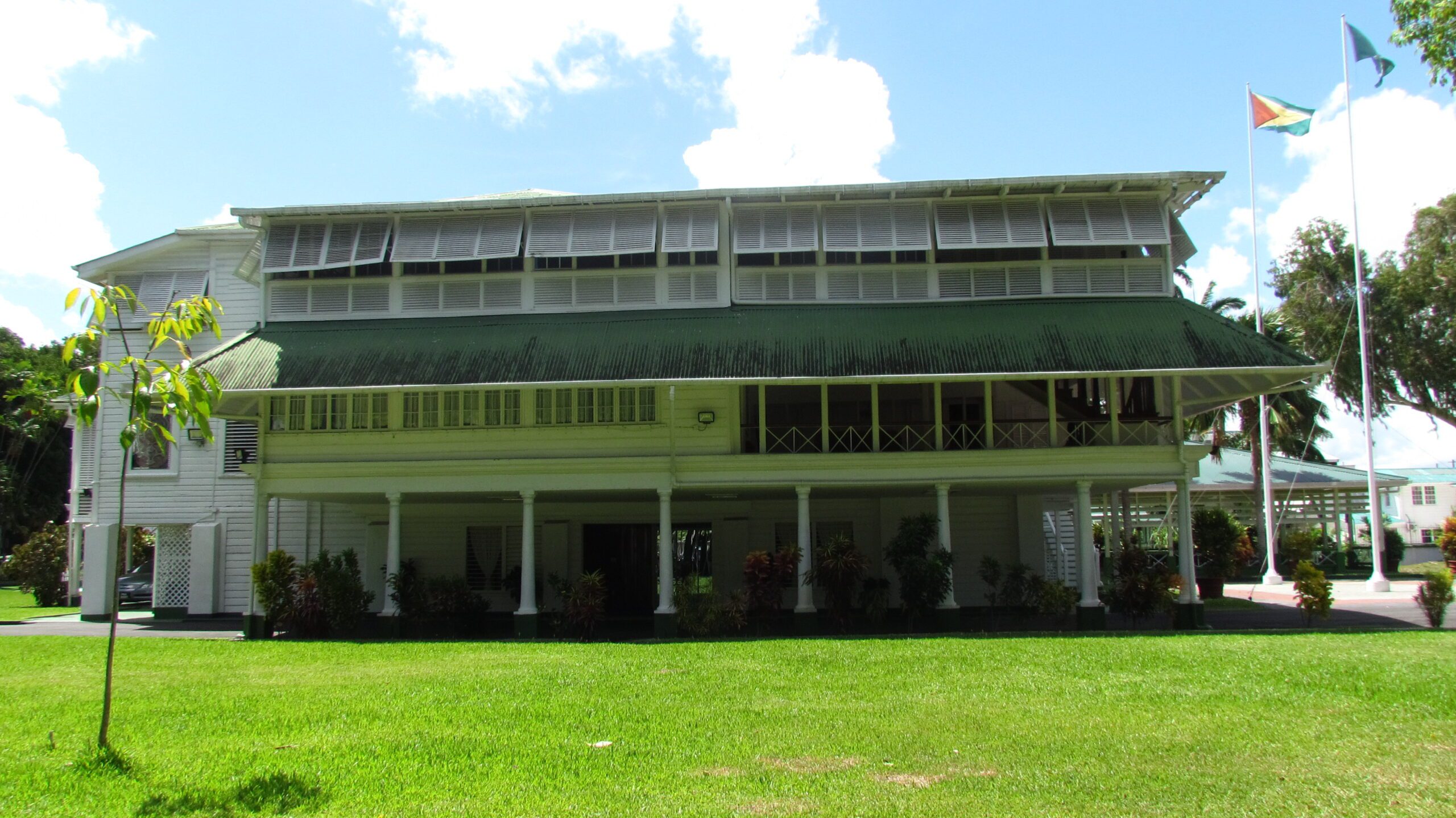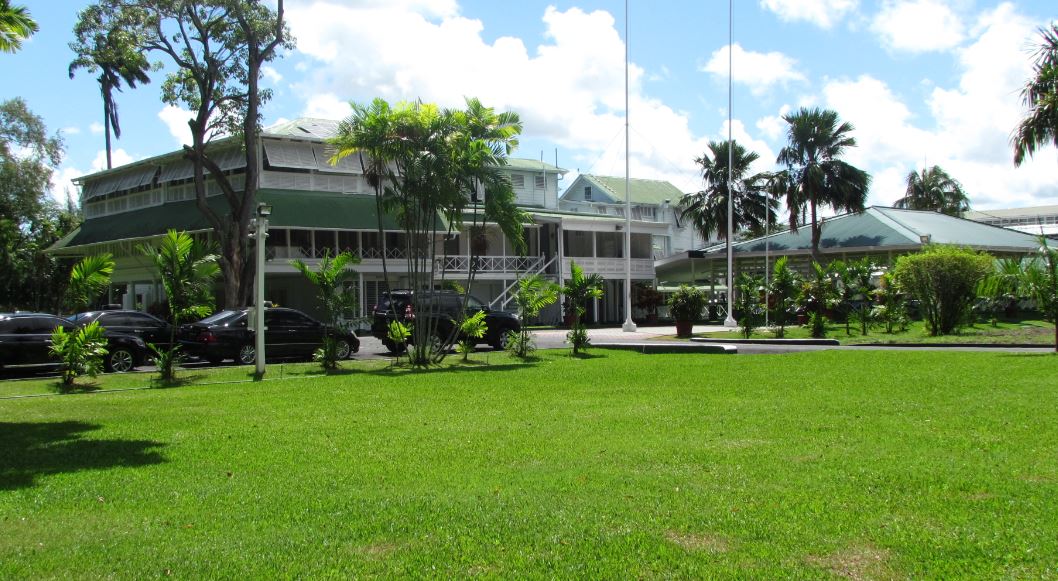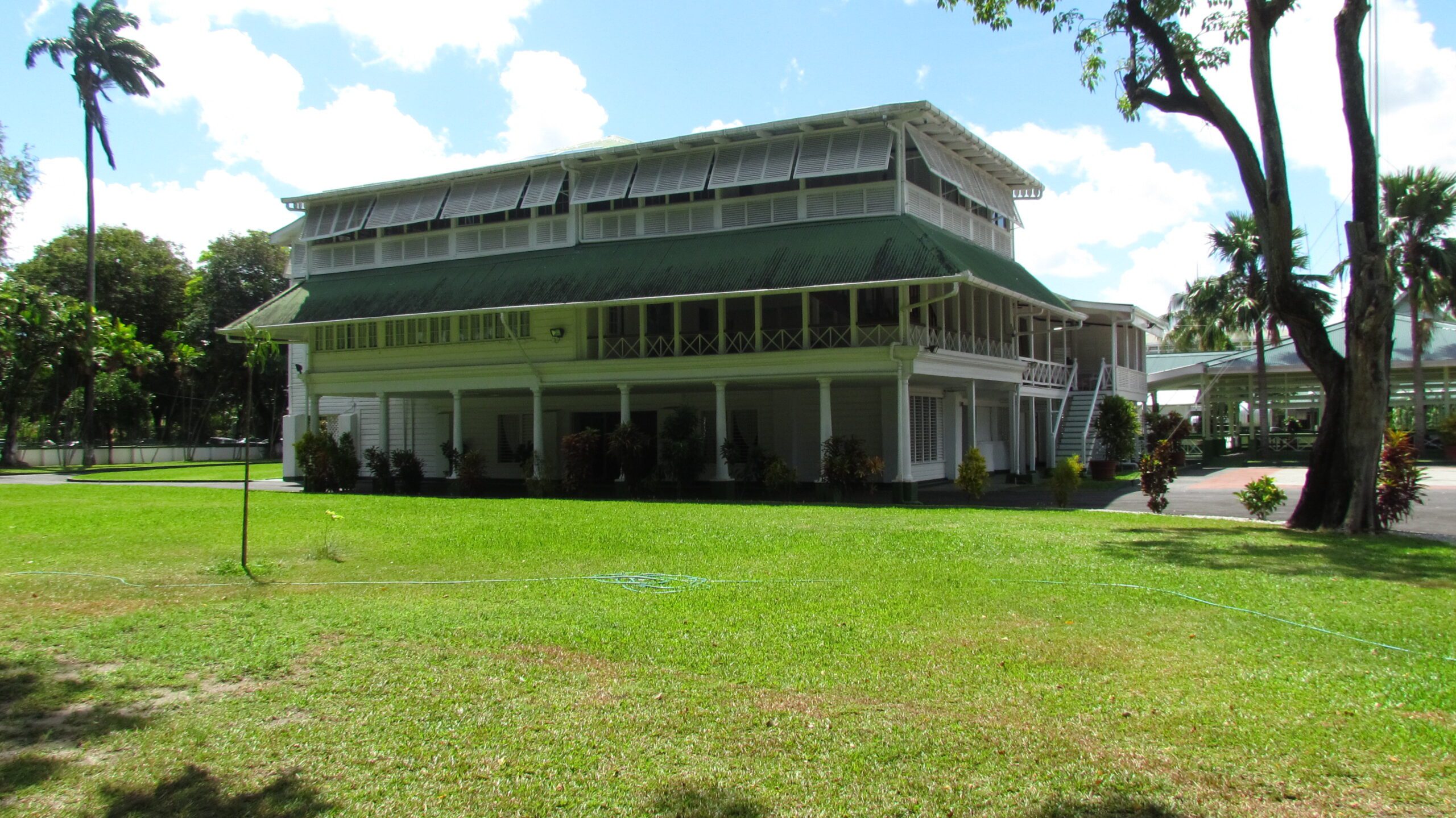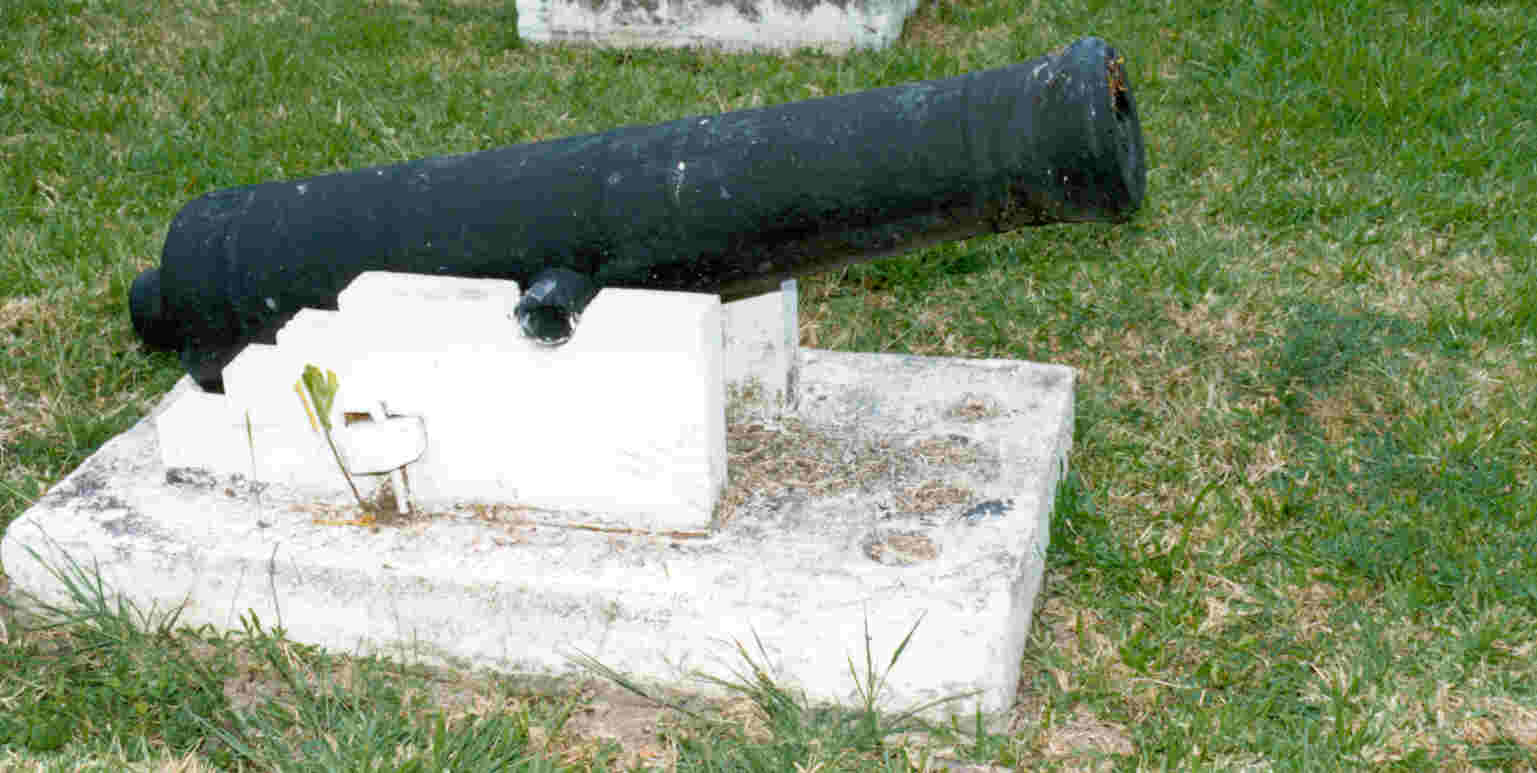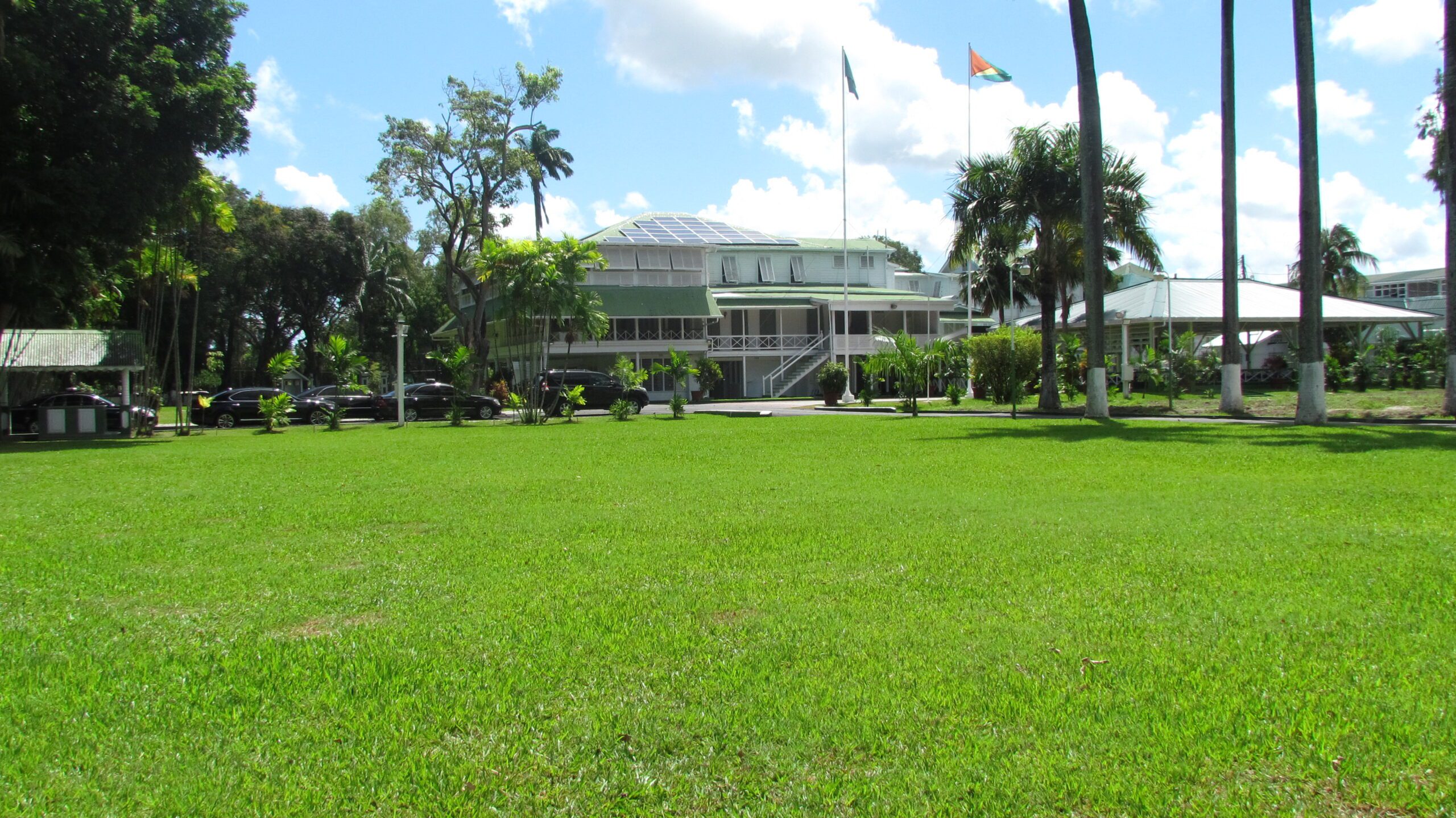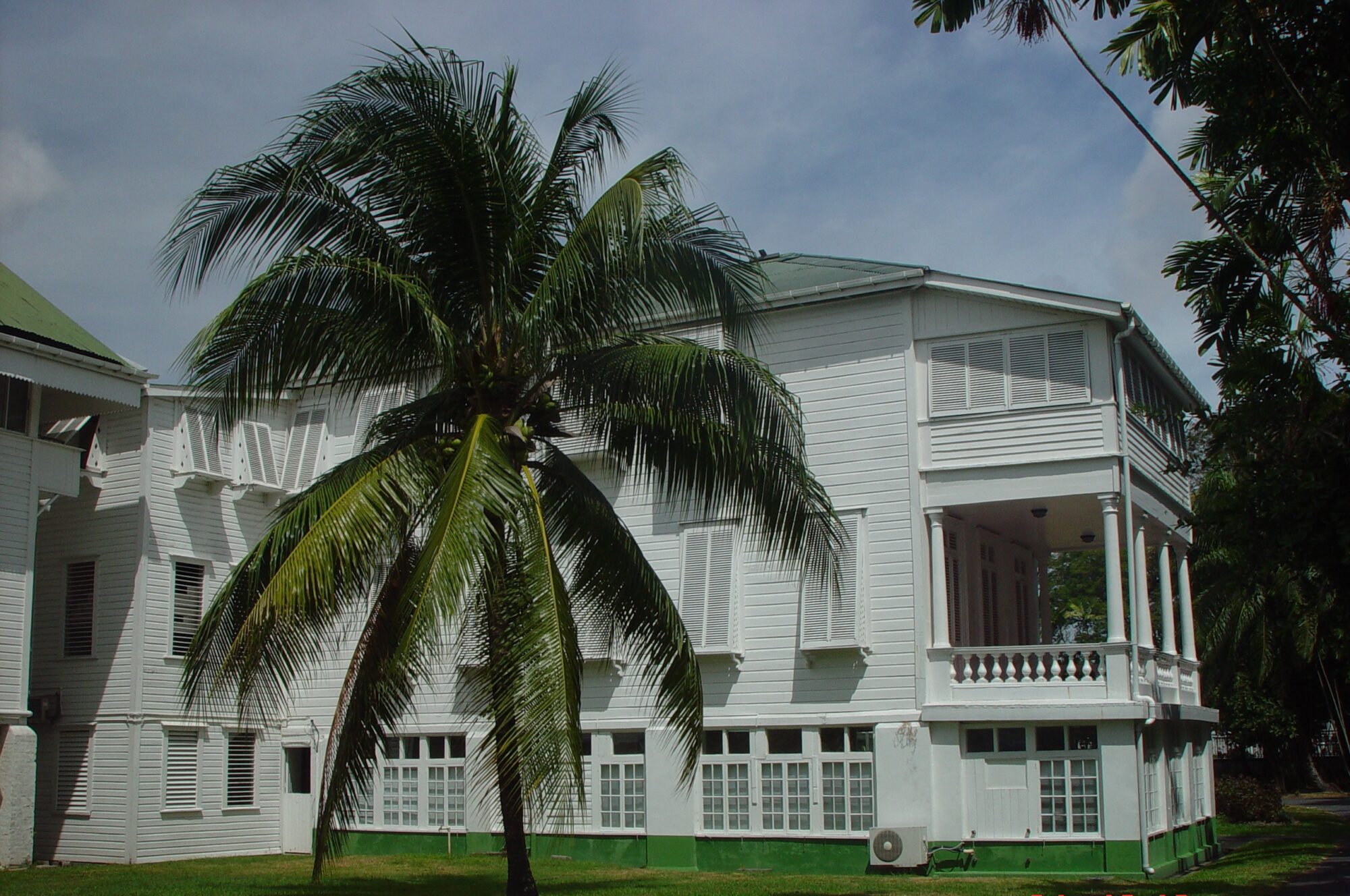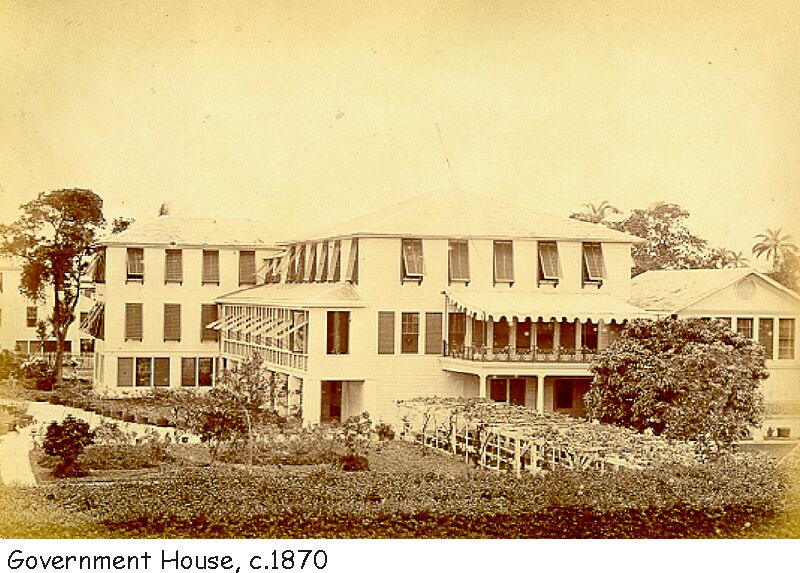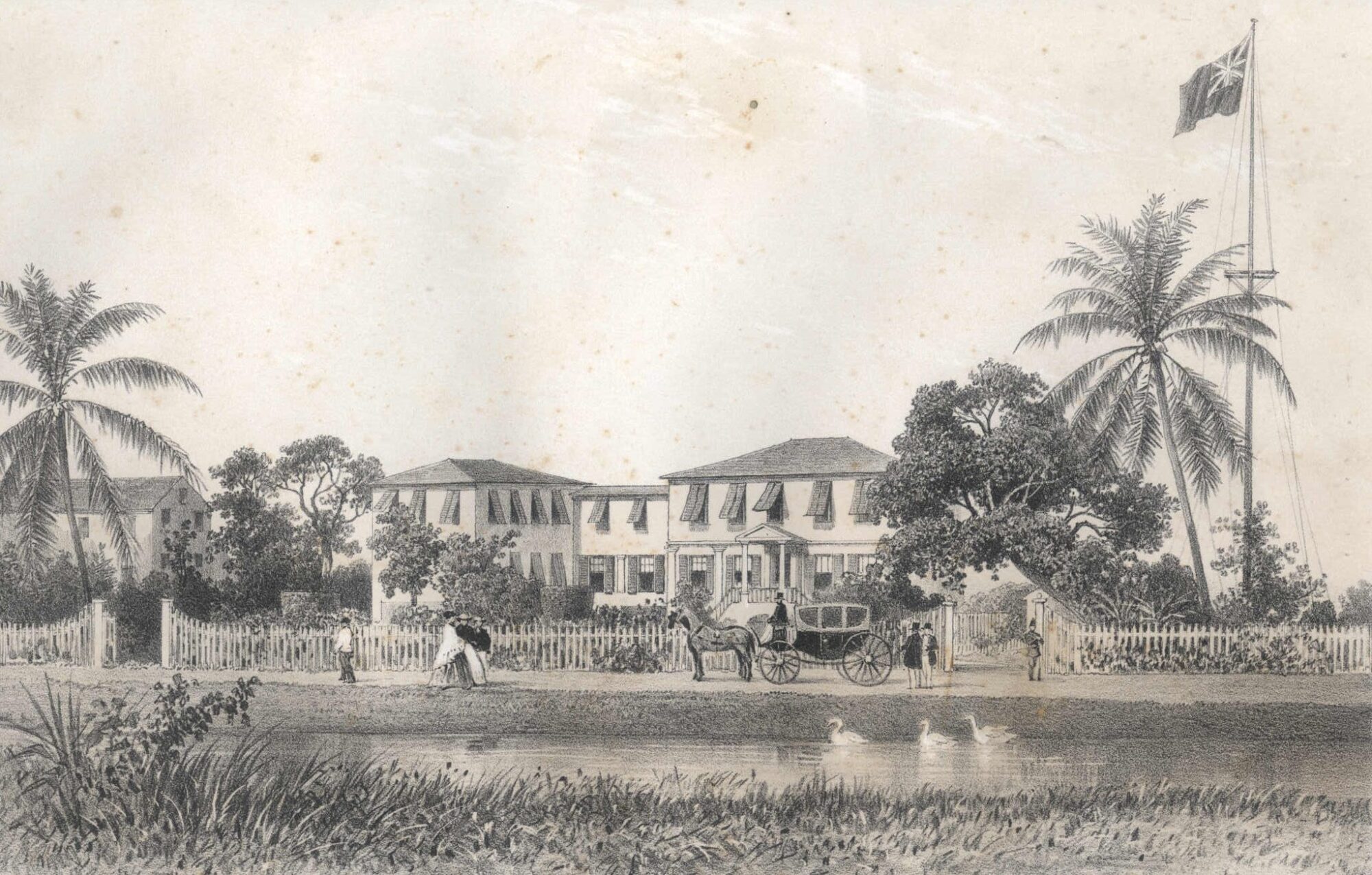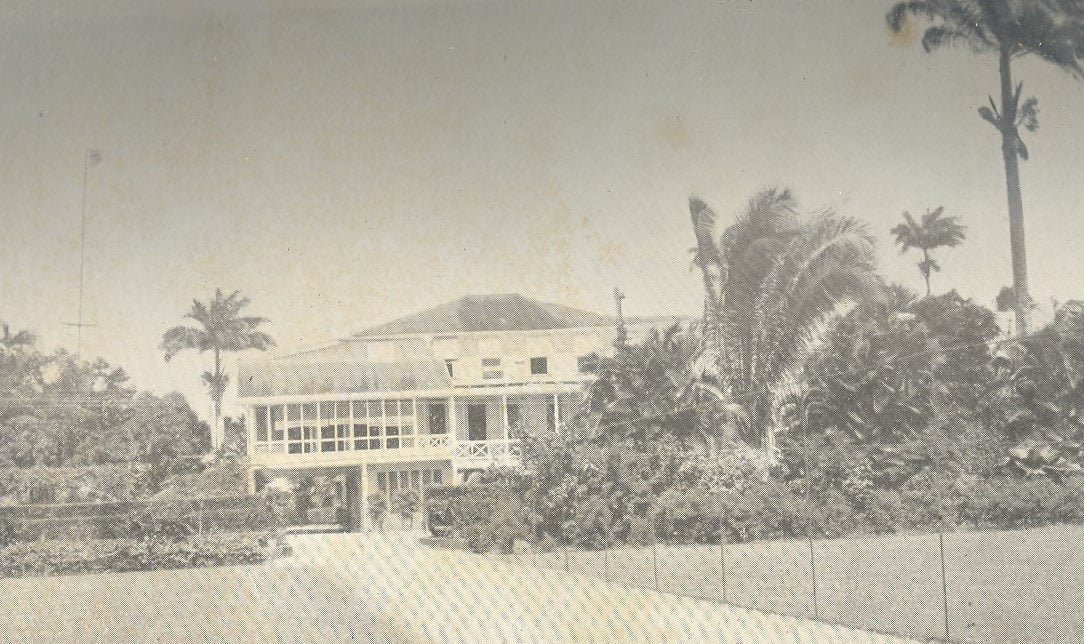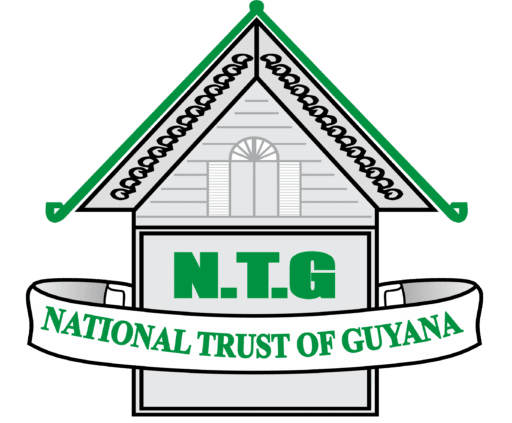This 19th century edifice is located with its main façade on Main Street and bordering New Market and Carmichael Streets, Cummingsburg, Georgetown, and is the official residence of the Executive Presidents of Guyana. The Structure was formerly known as Governor House and is sometimes referred to as Guyana House. In British Guiana, housing for crowned representatives were not free, therefore ordinances were passed in 1852, and 1853, to purchase a building for Governors to dwell in. The building owned by Bishop Austin was selected. After the purchase, the building was officially addressed as Governor House; it was described as a two-story timber structure with a double stairway facing Carmichael Street which stood on two (2) meters (8 feet) high brick pillars. The lawn of Governor House was considered small and funds were made available to purchase lot 93 Carmichael Street. The building later underwent a number of changes and extensions. Some of these
changes caused displeasure among the general public on the appearance of the structure, since governors of the day were considered ‘Gods’. In a bid to overcome the building’s flawed aesthetics, architectural plans were prepared for a new Governor’s House in 1871;
these plans however, did not bring forward tangible results. In 1875, an additional lot on Carmichael Street was purchased and attention was placed on further lifting the aesthetical appearance of the building and the lawns which was open and easily accessible to the
general public. In the early 1890s, lots 57-60 on Main Street were purchased to provide more space to the Governors. In 1894, the fencing of Governor House compound started with funds obtained by Governor Sir Charles Cameron Lees, K.C.M.G (1893-1894, 1895); the fence was built using concrete (at the base) and iron (railings) and was completed in 1895. The main entrance was later relocated to Main Street and further landscaping was done to uplift the appearance of the compound. Some governors that lived in this building
include Philip E. Wodehouse, Esquire, (1854 &1858-1861), John Scott, Esquire, (1869-1873), Sir Henry Turner Irving, K.C.M.G., (1882, 1884-1887, 1887-1888), Sir Charles Cameron Lees, K.C.M. G (1893-1894, 1895), Sir Graeme Thomson, K.C. B (1923-1925), and Sir Edward Brandis Denham, K.C.M.G., K.B.E. (1930). After independence, the building was renamed State House, since it no longer housed Governors, but the Heads of state of the sovereign state of Guyana. Some architectural features of the building include
demerara windows, enclosed galleries, the decorative ceiling in the dining hall, and brick masonry columns. State House was published in the Official Gazette in April, 2001, as a National Monument by the National Trust of Guyana.
